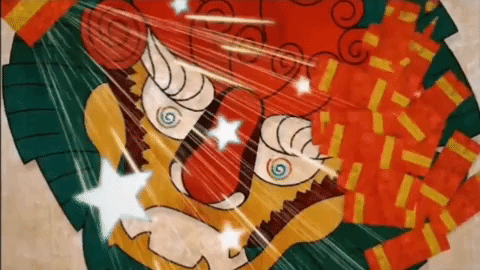Things You Didn't Know About Lunar New Year
Lunar New Year is a festival celebrating the beginning of the new year on the traditional lunar calendar. It is a holiday celebrated many countries like China, Korea, Vietnam, Taiwan, Hong Kong, Singapore, Indonesia, India, Pakistan, and even England, France, and the United States.
According to legend, at the beginning of the Lunar New Year a mythical beast called the Nian would eat villagers, especially children, in the middle of the night. The villagers would hide in the mountains during this time, but one year they found that the Nian was afraid of firecrackers and the color red.
So the tradition became that when the New Year was approaching, the villagers would wear red clothes, and hang red lanterns and red spring scrolls on windows and doors. People also used firecrackers to frighten away the Nian.






The Lunar New Year celebrates the beginning of the lunar calendar, which calculates the months using the lunar cycle. This means that Lunar New Year does not begin on January 1st. The beginning of the Lunar New Year is different every year, and can happen anytime from January 21st to February 20th. In 2020, the Lunar New Year begins on January 25th. The Lunar New Year is celebrated over 15 days, and there are different traditions associated with each day. For example, on the first day of Lunar New Year is a time to honor one's elders, and families visit the oldest and most senior members of their extended families, usually their parents, grandparents and great-grandparents. On the 15th day, people celebrate the Lantern Festival, a time when children go out at night carrying paper lanterns and solve riddles on the lanterns.
The Chinese Zodiac is one of the most important parts of Lunar New Year. The Chinese Zodiac assigns an animal to each year in a repeating 12-year cycle using the lunar calendar. In order, the 12 Chinese horoscope animals are: Rat, Ox, Tiger, Rabbit, Dragon, Snake, Horse, Goat, Monkey, Rooster, Dog, and Pig. 2020 is the year of the Rat. Chinese Zodiac animals have lucky meanings. Chinese people associate each animal with certain characteristics. It's believed that people born in a given year have the personality of that year's animal. Different countries, including Korea, Japan, Vietnam, Cambodia, and Thailand have differences from the Chinese Zodiac. For example, in Vietnam there is a cat in place of the rabbit. Many people today still consider the Chinese Zodiac when making major decisions, such as who to marry, when to have a baby, and how to invest money.
A dinner is held on New Year's Eve during which family members gather for a celebration. The venue will usually be in or near the home of the most senior member of the family. Many of the traditional foods served during Lunar New Year are homophones - for example, apples are eaten as a symbol of peace because the word for apple (ping guo) is a homonym of the word for peace. Families may also serve uncut noodles (making them as long as they can), which represent longevity and long life. Dumplings are also popular because they are shaped like gold or silver ingots. Many families still follow the tradition of eating only vegetarian food on the first day of the New year, as it is a sign of peace. They believe that eating only vegetarian food the first day will bring joy and peace into their lives for the whole year.
Photo source: yahoo.com
Red envelopes or red packets are passed out during the Lunar New Year's celebrations, from married couples or the elderly to unmarried junior family members or children. Red packets almost always contain money, usually varying from a couple of dollars to several hundred dollars. Per custom, the amount of money in the red packets should be of even numbers, as odd numbers are associated with cash given during funerals.The number eight is considered lucky (for its homophone for "wealth"). The number six is also very lucky as it sounds like smooth, as in the sense of having a smooth year. The number four is the worst because its homophone is "death.”
Firecrackers are usually strung on a long fused string so they can be hung down. Each firecracker is rolled up in red papers with gunpowder in its core. Once ignited, the firecracker lets out a loud popping noise and, as they are usually strung together by the hundreds, the firecrackers are known for their deafening explosions that are thought to scare away evil spirits. The burning of firecrackers also signifies a joyful time of year and has become an integral aspect of the celebrations. Even though firecrackers are banned in many countries where Lunar New Year is celebrated, many people still set off firecrackers.
The color red is commonly worn throughout the Lunar New Year. The wearing of new clothes is another clothing custom during the festival, as the new clothes symbolize a new beginning in the year, as well as having enough things to use and wear in this time. Lunar New Year traditions incorporate elements that are symbolic of deeper meaning. One common example of Lunar New Year symbolism is the Chinese character for happiness written on diamond-shaped red paper, which are displayed on the entrances to people’s homes. This sign is usually seen hanging upside down, since the Chinese word for upside down is a homophone for arrival. Therefore, it symbolizes the arrival of luck, happiness, and prosperity. For Cantonese-speaking people, the Cantonese word for upside-down sounds like the Cantonese word for pour, as in “pouring the luck away,” which would symbolize bad luck. This is why the fortune character is not usually hung upside-down in Cantonese communities.
For many people around the world, Lunar New Year is a time for families to get together and celebrate. It is a time for new beginnings, when people clean their houses, in order to sweep away any ill-fortune and to make way for incoming good luck. The holiday marks the end of the coldest days. People welcome spring and what it brings along: planting and harvests, new beginnings and fresh starts.
Lunar New Year has been celebrated in the United States since 1858, when the residents of San Francisco’s Chinatown were eager to share their culture with their fellow San Francisco residents who were unfamiliar with it. The organizers chose to showcase their culture by using a favorite American tradition – a parade. Today, the parade is attended by some 500,000 people, and there are similar parades in many cities throughout America, including New York City, Boston, Los Angeles, Chicago, and Washington, DC.
This year Peace Corps volunteers - Jane Yi, Danielle Kim, Serena Berkowitz, Vinny Tang, Renjia Huang, Tai Hu, Jahniece McCollum, Suganthi Gomathinayagam and Thomas Choi will organize Lunar New Year Festival at America House to share this holiday and traditions with Ukrainians.
Mark you calendars and get ready for some exciting and unusual experience!










